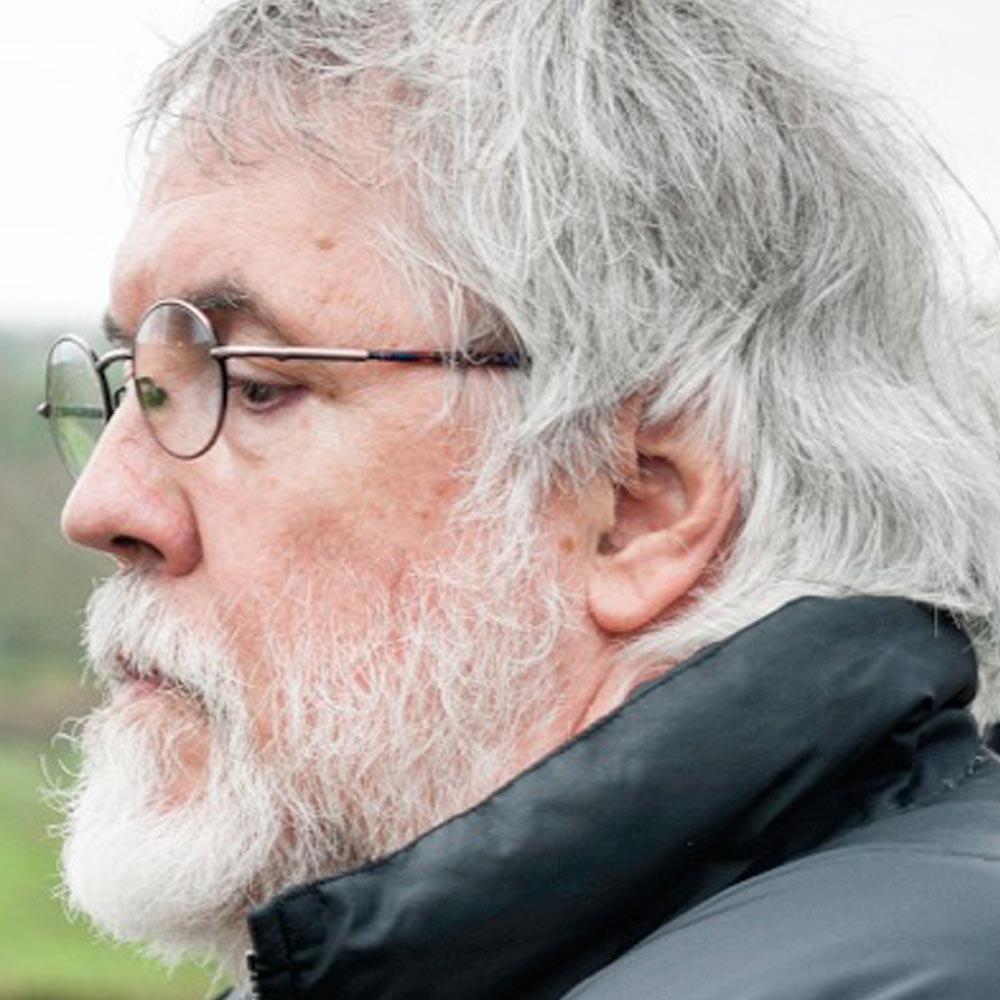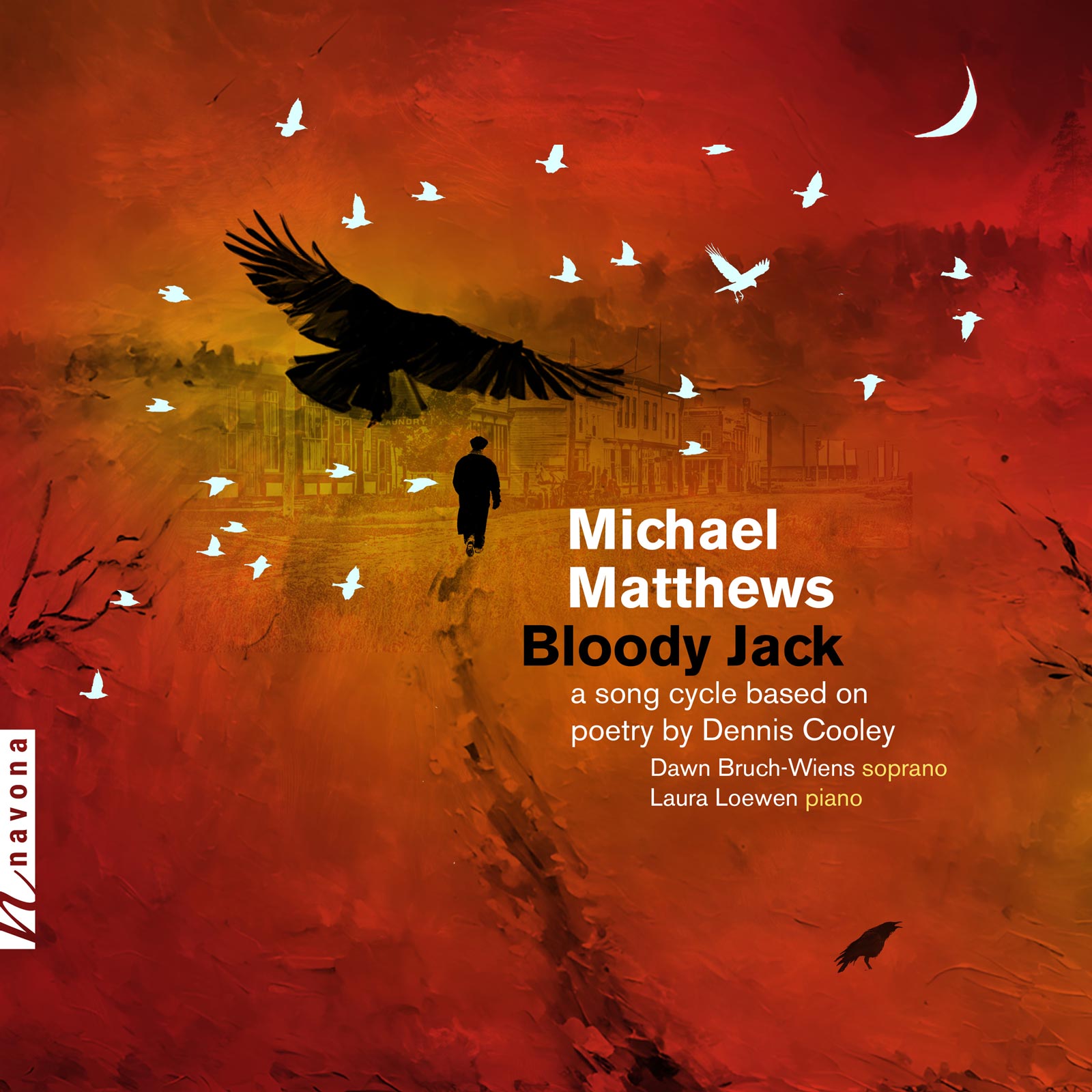
BLOODY JACK from composer Michael Matthews is a cycle of 14 songs based on selected poems from Dennis Cooley’s 1984 collection by the same name. These poems draw upon the chilling story of John Krafchenko, a Hungarian immigrant to Canada who became a notorious outlaw at the turn of the 20th century. The music was originally composed between 2015 and 2017, and revised in 2020. Matthews dedicates this work to pianist Laura Loewen and vocalist Dawn Bruch, both of whom bring this release and its haunting harmonies to life.
Today, Michael is our featured artist in the “Inside Story,” a blog series exploring the inner workings and personalities of our composers and performers. Read on to learn about the musical influences he gained as a child living in Trinidad the similarities he draws between music and photography…
Take us on a walk through your musical library. What record gets the most plays? Are there any “deep cuts” that you particularly enjoy?
Recently I have been listening to Beethoven, Robert Johnson, The Decembrists, Haydn, Josquin, The Mountain Goats, György Kurtág, Anaïs Mitchell, Ockeghem, Frank Sinatra, and Jethro Tull. Humans have created so much amazing and profound art, and in the realm of music I am constantly drawn in multiple directions. My music collection is wide ranging and eclectic, encompassing many regions, styles and time periods, and I am always discovering new things.
The music that I keep coming back to and that always touches my soul is late Beethoven, Josquin des Pres, Gustav Mahler, Bob Dylan, Joni Mitchell. Joseph Haydn, and The Beatles.
What emotions do you hope listeners will experience after hearing your work?
I would hope that listeners would experience a sense of discovery and wonder, a desire to hear the music again. My music is multi-layered and can be a bit challenging on first hearing. At the same time I find it quite expressive, and hope that it makes an emotional connection and evokes both curiosity and the desire to explore more deeply.
What were your first musical experiences?
As a child I lived in Trinidad. My father had a large and diverse music collection and I listened to much of that. What I especially remember from that time is the calypso and steel band music, which was wonderful. I think that much of the source of my interest in rhythm stems from that time.
What are your other passions besides music?
I am quite active as a photographer, and I really love it. I do a lot of night photography, macro, landscape, architecture, and especially abstractions. I find the experience of making and editing photos to be very similar to composing music — both creative acts focus on the importance of proportion, balance, structure, color. I also find working with music and photo software quite satisfying; as artists we have such wonderful tools at our disposal today.
What’s the greatest performance you’ve ever seen, and what made it special?
One performance that I always remember was the Los Angeles Philharmonic performing Mahler’s 9th Symphony with Carlo Maria Giulini conducting. I was a university student. I knew the piece well, and was awed by Giulini’s complete knowledge of and immersion in this profound work. There was complete silence in the hall for what seemed like forever when the music ended. The audience did not want to leave that glorious world.

Inspired by the worlds of nature and literature, Michael Matthews creates music that compels the listener to step beyond the every day to dwell for a while in images of paradox, to consider the ever-changing tapestry of life. Matthews has a deep love for the contemporary symphonic tradition and has established himself as a master of large-scale musical structures, motivic relationships, and organic wholeness, all of which lie at the core of symphonic thought. The symphony is, for Matthews, both a vital form and a special challenge that allows for musical ideas to be carried between movements. Compositional influences include Beethoven, Mahler, Schoenberg, Shostakovich, Schnittke and, more recently, Scandinavian composers Pettersson and Aho.

